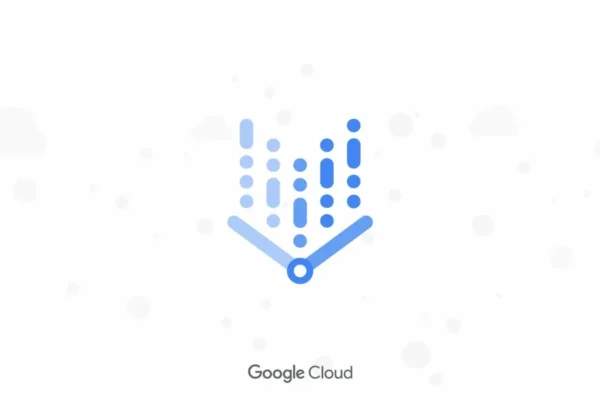
The power of automation during business processes provides businesses with a great deal of benefits and advantages. The realization of repetitive and routine tasks without human intervention is ensured by the automation of business processes. Strategies commonly used in many industries include business process automation. Technologies such as robotic process automation, artificial intelligence, workflow management systems, and automated data integration further increase the power of automation. Automation planning, implementation and management must be done carefully. Automating business processes should be supported by appropriate controls and audits for good analysis and in terms of the design process.
Providing a fast and more precise service delivery always improves the customer experience. Applications such as systems that provide response systems in an automated manner, self-service tools and personalized recommendation systems always increase the interaction with customers. One of the features that can be scaled according to the demands is the scalability and flexibility. It allows you to be more flexible and adaptable depending on the growth or changing power requirements. Thanks to the process improvement and analytical feature, it is used to monitor business processes, collect and analyze data. This makes it easier and more practical to measure the performance of processes, identify areas for improvement and make data-driven decisions.
Artificial intelligence and machine learning are important tools that increase the power of automation within business processes. It allows performing tasks in a repetitive, routine and time-based manner without human intervention. Error reduction and quality improvement Errors due to human intervention are less likely to occur in automated processes. Automation always improves the accuracy of data and the quality of processes. Machine learning and artificial intelligence have the capabilities to obtain valuable insights and make predictions by analyzing large data sets. It provides the ability to automate data analytics and forecasting processes during business processes. For example, in areas such as inventory optimization, demand forecasting and sales forecasting, faster and more accurate results can be achieved by using artificial intelligence and machine learning.
The use of automated systems for businesses instead of doing repetitive tasks always reduces costs. Labor costs and returns from mistakes are reduced thanks to cost savings. It has the ability to understand and process text data with artificial intelligence and machine learning, natural language processing and text analytics techniques. Customer feedback always ensures that text-based information such as emails, social media data is automatically analyzed and converted into meaningful information. Operations such as automatically classifying customer complaints or analyzing survey responses can be performed.
Automated decision-making enables automated decision-making by learning algorithms such as machine learning and artificial intelligence from complex data sets. It provides the opportunity to automate and optimize decision-making processes. During credit evaluation processes, automatic decisions can be made based on customer data or automatic demand approval processes can be created. Advanced artificial intelligence and machine learning models are very powerful in image processing and recognition. Thus, it is possible to perform automatic analysis and recognition in image-based processes. During quality control processes, images of products are automatically analyzed and image-based authentication applications are used.
What is Machine Learning Used For?
Machine learning, which refers to the ability of computer systems to learn in an experience- and data-driven way, is a sub-branch of artificial intelligence that enables computer programs to learn from automated data contained on data to perform a specific task or solve a problem. Machine learning is very often used to predict future events and make predictions by analyzing large data sets. It is used a lot in areas such as financial market forecasting, weather forecasting and demand forecasting. In the traditional program approach, coding is done with instructions set by employees to solve a program or a specific problem. It works with the process of learning through data so that the program can perform a specific task. During this process, algorithms and statistical methods are used and the program develops itself with experiences in a data-based way.
The classification method used to assign to a specific data point and a specific class is done in areas such as email spam filters, disease diagnosis, image or text analysis. Supervised learning, which is found between machine learning branches, is a type of learning in which a model is trained with output labels along with input data. By learning the relationship between the input data given to the model and the target outputs, predictions can be made for new input data. Regression is used to understand the relationships between data points and to predict a continuous output value. Regression analysis is used quite a lot in areas such as sales forecasting, home price forecasting, and income forecasting. The unsupervised learning subbranch is used to explore hidden structures and images among input data. There are many algorithms to detect the structure and similarities in the data set. Problems such as size reduction and clustering also use the unsupervised learning path.
Clustering is used to group data points based on similar characteristics. Clustering algorithms are used in areas such as customer segmentation, market segmentation, and social network analysis. The process by which an agent learns the best actions to accomplish a particular goal by interacting with its environment is called reinforcement learning. Self-improvement is achieved through experience based on the agent’s targeted reward and punishment signals, and is very often used in areas such as autonomous driving, game playing, etc. Natural language processing is used in areas such as natural language comprehension, translation, text classification, and text production. With the ability to learn based on large amounts of data, machine learning helps solve more real, complex world problems.
In Which Areas Is Artificial Intelligence Used?
The ability of computer systems to have the level of intelligence as human beings and the like is called artificial intelligence. Computer programs and algorithms perform tasks that require intelligence such as learning, thinking and problem solving like humans. Mimicking reasoning processes such as solving complex problems, analyzing information, recognizing patterns, making predictions and making decisions are among the main goals of artificial intelligence. Artificial intelligence-based technologies such as driverless cars, environmental sensing and autonomous navigation are used a lot in the automotive sector. We can also see a lot of artificial intelligence being used in areas such as music composition, creating pictures and videos, making games and analyzing works of art. Artificial intelligence is preferred in areas such as energy distribution and management, energy efficiency, monitoring and maintenance of power networks.
Machine learning, natural language processing, image processing and robotics, expert systems are among the sub-branches of artificial intelligence. Artificial intelligence is used in many different areas around the world. We can see artificial intelligence used in many sectors such as healthcare, automotive, retail, finance, energy, law, education, manufacturing, security and defense. Artificial intelligence provides advantages in many areas to increase efficiency, improve decision-making processes and discover new opportunities. Issues such as ethics, security and data privacy are also important to consider in artificial intelligence.



